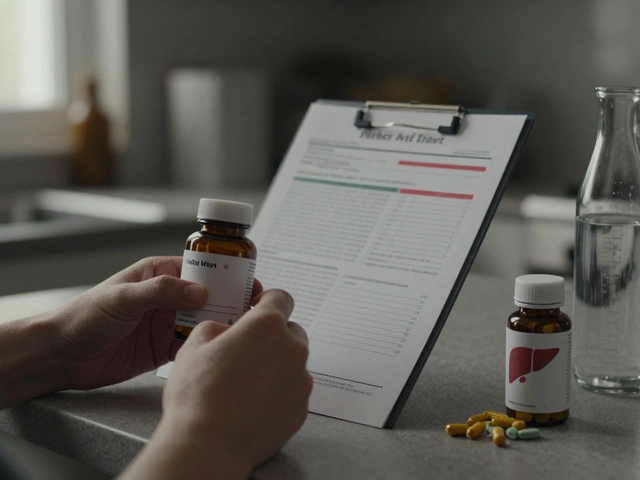- Home
- Medical Tourism
- Medical Tourism: How Popular Is It and Why Are So Many People Doing It?

Medical Tourism: How Popular Is It and Why Are So Many People Doing It?
Would you ever catch a flight for a new smile, or maybe a new knee? You're not alone. Medical tourism is exploding, and it’s not just people hunting for bargains—patients are packing suitcases because of wait times, limited treatments at home, or simply better service somewhere else.
Right now, it’s completely normal to meet folks in recovery chatting in waiting rooms in Turkey, Thailand, Mexico, or even India, swapping stories about their surgeons and sharing restaurant tips. The World Health Organization recently estimated tens of millions of people cross borders for healthcare each year. For some, it’s about saving cash—sometimes surgery abroad costs half what it does at home. For others, it means skipping stifling waitlists or getting cutting-edge treatments not yet approved elsewhere.
If you’re only starting to look into medical tourism, it can feel overwhelming. The options are huge, the deals can sound almost too good, and, let’s be honest, trusting your health to someone in another country isn’t a quick decision. If you’re thinking about a health trip, stick around—there are some pretty straightforward ways to separate the hype from what’s actually safe and smart.
- Why Medical Tourism Is Booming
- The Daily Realities: Who’s Traveling and for What
- Popular Destinations and What They Offer
- Cost and Savings—Are They Worth It?
- Risks, Red Flags, and How to Stay Safe
- Planning Your Own Medical Trip: Pro Tips
Why Medical Tourism Is Booming
The growth in medical tourism is not just a random blip. There are real reasons more people are grabbing their passports for healthcare. Cost differences alone are staggering—a heart bypass can cost about $130,000 in the US but averages under $30,000 in India. That’s not a typo. Dental implants, cosmetic surgeries, fertility treatments—a lot of prices drop so much abroad that travelers save thousands, even after travel and hotel bills.
But it’s not all about saving cash. Long wait times are a dealbreaker for many. In Canada or the UK, getting a new hip or knee could take months or even longer. In Thailand or Mexico, you can get it sorted in weeks. People can’t always afford to wait, especially if pain or work is on the line.
There’s also access to new tech and different treatments. For example, some stem cell therapies banned in the US are common practice in places like Germany or Panama. And it might sound odd, but the level of service in private clinics abroad often leaves public hospitals back home in the dust. Think smoother check-ins, private rooms, and personal care most folks don’t even expect in a hospital.
The numbers prove it’s not just hype. Here’s a snapshot of how many people travel for medical care and where they’re headed the most:
| Country | Annual Medical Tourists (Est.) |
|---|---|
| Thailand | Over 3 million |
| Mexico | More than 1.2 million |
| Turkey | Nearly 1 million |
| India | Approx. 1.4 million |
The pandemic gave medical tourism a small dip, but those numbers have bounced back, reaching record highs by early 2024. Remote work has also given people more freedom—why not combine a procedure with a new city, especially if recovery means better weather and cheaper follow-up visits?
If you’re wondering why this trend doesn’t seem to be slowing, just look at the combo: high bills at home, massive improvements overseas, fast care, and a decent chance to actually enjoy recovery. No wonder this industry is thriving.
The Daily Realities: Who’s Traveling and for What
If you’re picturing only globe-trotting seniors or wealthy jet-setters seeking luxury surgery, think again. People from all walks of life dive into medical tourism. The main groups? Middle-income folks looking to save, young professionals without extensive insurance, and even families hoping to get treatments that are too expensive or just unavailable at home.
Younger patients often travel for cosmetic work—think hair transplants, breast surgeries, or dental veneers. Retirees might seek out hip replacements or cataract surgery in places with shorter wait times. Parents fly with kids for dental braces or treatments for rare conditions. In fact, according to the Medical Tourism Association’s 2023 annual report, about 14 million people traveled abroad for healthcare that year. That number’s still growing.
Here’s a breakdown of who goes and why, based on recent data:
| Type of Traveler | Common Treatments Sought | Popular Regions |
|---|---|---|
| Young adults (18-35) | Cosmetic surgery, dental, fertility | Turkey, South Korea, Mexico |
| Middle-aged (36-60) | Dentistry, orthopedics, eye surgery | Thailand, India, Hungary |
| Seniors (60+) | Joint replacements, cardiac, cancer care | India, Costa Rica, Malaysia |
Everyday reality? Some folks combine treatment with a vacation, but most aren’t after luxury—they’re practical. If your home clinic quoted you $20K for dental implants but you could fly, get the work done, and recover in another country for $7K total, it’s not hard to see why so many are packing bags.
- Tip: Ask for actual before-and-after photos from your clinic. Not all advertised results are legit.
- If you’re thinking about bringing a travel buddy, look for hospitals that welcome companions—some even offer bundled packages for two.
- Check if local laws allow prescription refill for aftercare at home. That gets tricky if you need post-op meds.
The bottom line? People choosing medical tourism are mostly regular folks frustrated with healthcare in their home country—too costly, too slow, or too limited. The crowd is younger and braver than you’d expect, and they’re chasing real results, not Instagram likes.
Popular Destinations and What They Offer
Let’s get real about where people are actually going for medical tourism, and what each country is best known for. It’s not the same everywhere, and you’ll usually find certain treatments attract more travelers in specific places.
You’ve probably heard the buzz about Thailand and Turkey. Thailand is almost legendary for cosmetic surgery and gender confirmation procedures. Bangkok’s hospitals look more like fancy hotels, and the private nurses often speak fluent English. Then there’s Turkey, which has turned into a hub for hair transplants and dental work—walk through Istanbul, and you’ll spot folks healing after getting a new set of teeth or restoring their hairlines.
Mexico is the top choice for Americans and Canadians looking for affordable dental, bariatric, and plastic surgery. It’s right next door, plus many of the doctors trained in the US. India is a heavy hitter for heart surgeries and orthopedic work like hip or knee replacements. People fly in from Africa, the Middle East, and even the UK, because Indian hospitals can perform complex surgeries for a fraction of the price. Singapore and Malaysia round out the list with strong reputations for complex surgeries, and high safety standards—people stop over here for cancer care or serious diagnostics.
"The growth in medical travel to Asia and Latin America is not just about cost, but about quality and speed of treatment. Many facilities are now internationally accredited and have doctors who’ve trained in Europe or North America." — International Medical Travel Journal, 2024
Here’s a quick breakdown of the big names, top treatments, and why travelers pick them:
| Country | Popular Treatments | Why Go There? |
|---|---|---|
| Thailand | Cosmetic surgery, gender reassignment, dental care | Advanced clinics, English-speaking staff, world-famous care |
| Turkey | Hair transplants, dental treatments, eye surgery | Affordable, modern tech, skilled surgeons |
| Mexico | Dental implants, bariatric surgery, plastic surgery | Close to US/Canada, low costs, US-trained doctors |
| India | Cardiac surgery, orthopedics, fertility treatments | Cutting-edge with low prices, big hospitals |
| Singapore | Cancer care, heart surgery, diagnostics | Top-notch medical standards, English spoken |
| Malaysia | General surgery, wellness checks, fertility | Cost savings, safety, JCI-accredited hospitals |
If you’re thinking about options, here are some quick tips:
- Always check if the hospital has international accreditation (like JCI or TEMOS).
- Read real patient reviews, not just the official website stories.
- Double-check that doctors speak your language—clear communication can’t be skipped.
- Ask if prices cover aftercare or guarantee follow-ups, not just the surgery itself.
Wherever you consider, line up your choices based on expertise, safety, and transparency—not just price tags or pretty pictures online.

Cost and Savings—Are They Worth It?
The first thing most people wonder about medical tourism is the price tag. Is it really that much cheaper to hop on a plane? Absolutely. The difference can be huge. Take dental implants—prices in the US can top $3,000 for one tooth, but in Mexico or Costa Rica, you’re looking at $800 or less, often with similar techniques and materials.
Let’s talk big surgeries. Heart bypass? Around $120,000 in the US, but about $11,000 to $18,000 in India, Thailand, or Turkey. Hip replacement? In the UK, you might pay £12,000—hop over to Hungary or Poland, and you’re in the £5,000 range (sometimes this covers your hotel too!). Even cosmetic procedures like nose jobs or breast surgery can cost a third of what you'd pay at home.
"In many cases, patients report total savings of 40% to 80%—and that includes flights, hotels, and even a bit of sightseeing while they’re there," says Josef Woodman, CEO of Patients Beyond Borders, a leading guide to international health travel.
But don’t just grab the cheapest option. The big draw isn’t just low cost—it’s value. Many international clinics throw in airport pickups, lightweight post-op care, translators, and often no hidden fees. Double-check what’s included when you compare prices at home and abroad.
Keep a few things in mind if you want the best deal:
- Factor in travel costs and how long you’ll need to stay. A cut-rate surgery turns expensive if you’re stuck in a hotel for weeks due to complications.
- Look for international accreditation—places certified by organizations like JCI or ISO have higher safety standards.
- Never wire money blindly or agree to “cash only” deals. Reputable clinics are transparent about payments and paperwork.
Bottom line: The savings are real, sometimes shocking, but always weigh cost against safety and quality—not just the number on your receipt. Sometimes, peace of mind is worth a few bucks more.
Risks, Red Flags, and How to Stay Safe
Okay, let’s get real: medical tourism isn’t all sunshine and smooth flight landings. People sometimes come home with complications that don’t just ruin the trip—they create major headaches back home. The main issues show up in infections, failed surgeries, or follow-up care gone wrong. The U.S. CDC has reported hundreds of cases over the past few years where travelers needed emergency follow-up. Not what you want as a souvenir.
Here’s a quick breakdown of the most common risks:
- Infections from bacteria not common in your home country
- Poor facility standards (especially in places with weak regulations)
- Surgical mistakes from undertrained staff
- Difficulty getting follow-up care after you return home
- Language barriers causing confusion or wrong meds
And some warning signs? If a clinic promises overnight miracle results or offers prices so low it makes you pause, trust your gut. Don’t book anything if you see a lack of real reviews, zero in-person video consults, or if they dodge questions about doctor credentials.
| Risk | Reported Rate (estimate) | How to Avoid |
|---|---|---|
| Post-surgery infections | 5-10% | Check facility has international accreditation |
| Surgical errors | 2-4% | Look up surgeon’s training and reviews |
| Medication errors | 1-2% | Get a full written treatment plan in your language |
| Follow-up problems | Up to 20% | Ask about aftercare before you book |
If you’re set on medical tourism, here’s how you actually stay safe:
- Pick facilities with accreditation like JCI or ISO—these groups check clinics for real safety standards.
- Insist on video chats with your actual doctor. Don’t settle for just email or a call with an assistant.
- Ask for patient references and dig deep into third-party reviews, not just the testimonials on their website.
- Get everything in writing—price, what’s included, refund policies, who’s on your care team, and what happens if something goes wrong.
- Buy travel health insurance that covers complications from planned treatments abroad. Regular insurance rarely does.
- Travel with a friend or family member, especially for bigger surgeries.
The bottom line? If a deal seems too smooth or cheap, there’s usually a catch. Medical tourism can be safe, but only if you do your homework and double-check everything.
Planning Your Own Medical Trip: Pro Tips
If you’re serious about medical tourism, some clear steps can make or break your trip. It’s not the time for guesswork—do your research and plan every detail.
Let’s get practical. Here’s what you need to tick off before you book that flight:
- Pick the right destination. Some countries are known for specialties. Thailand is huge for cosmetic surgery, Mexico for dental work, and India for heart surgery. Don’t just follow the crowd—check credentials and reviews for specific hospitals and doctors.
- Check hospital and doctor accreditation. Look for internationally recognized certifications, like JCI (Joint Commission International). This means the clinic meets global safety standards.
- Ask for a clear treatment plan. Get everything in writing—costs, recovery time, what’s included, and possible extras. Ask if post-treatment support is available after you fly home.
- Sort your documents early. You’ll need a valid passport, maybe a visa, and any medical records or test results your overseas doctor needs. Keep digital backups just in case.
- Talk to your local healthcare provider. Let them know about your plan so they’re ready to support before and after your trip.
- Book extra recovery time. Flying soon after surgery isn’t smart. Add a few recovery days to your travel plans, and check if your hospital offers airport pick-ups or nearby hotels for patients.
- Know your costs. Budget for flights, hotel, food, and unexpected extras—like complications or extra nights in the hospital. Medical tourism might save you money, but there could be surprise expenses.
Ever wondered where most people actually go? Here’s a look at recent data for top medical tourism destinations and the treatments they’re known for:
| Country | Popular Treatments | Annual Medical Tourists (millions) |
|---|---|---|
| Thailand | Cosmetic surgery, dental, gender reassignment | 3 |
| Mexico | Dental, bariatric surgery, eye surgery | 1.2 |
| India | Heart surgery, orthopedic, fertility | 0.7 |
| Turkey | Hair transplants, plastic surgery, eye | 0.85 |
One last word: don’t ignore travel insurance. Specialist policies exist for medical travel—they’re worth the peace of mind when you’re about to get on a plane for surgery. If you follow these tips, you’re set up for a safer, cheaper, and stress-free health journey.

Arnav Singh
I am a health expert with a focus on medicine-related topics in India. My work involves researching and writing articles that aim to inform and educate readers about health and wellness practices. I enjoy exploring the intersections of traditional and modern medicine and how they impact healthcare in the Indian context. Writing for various health magazines and platforms allows me to share my insights with a wider audience.
About
Medical Resource Center India is a comprehensive online platform dedicated to providing reliable health information and medical resources in India. Explore a wide range of articles, tips, and advice on medicine, healthcare services, and wellness. Stay informed about the latest developments in Indian medicine and access valuable insights into maintaining a healthy lifestyle. Discover expert guidance and health solutions tailored for every Indian citizen. Your go-to destination for authoritative medical knowledge in India.








